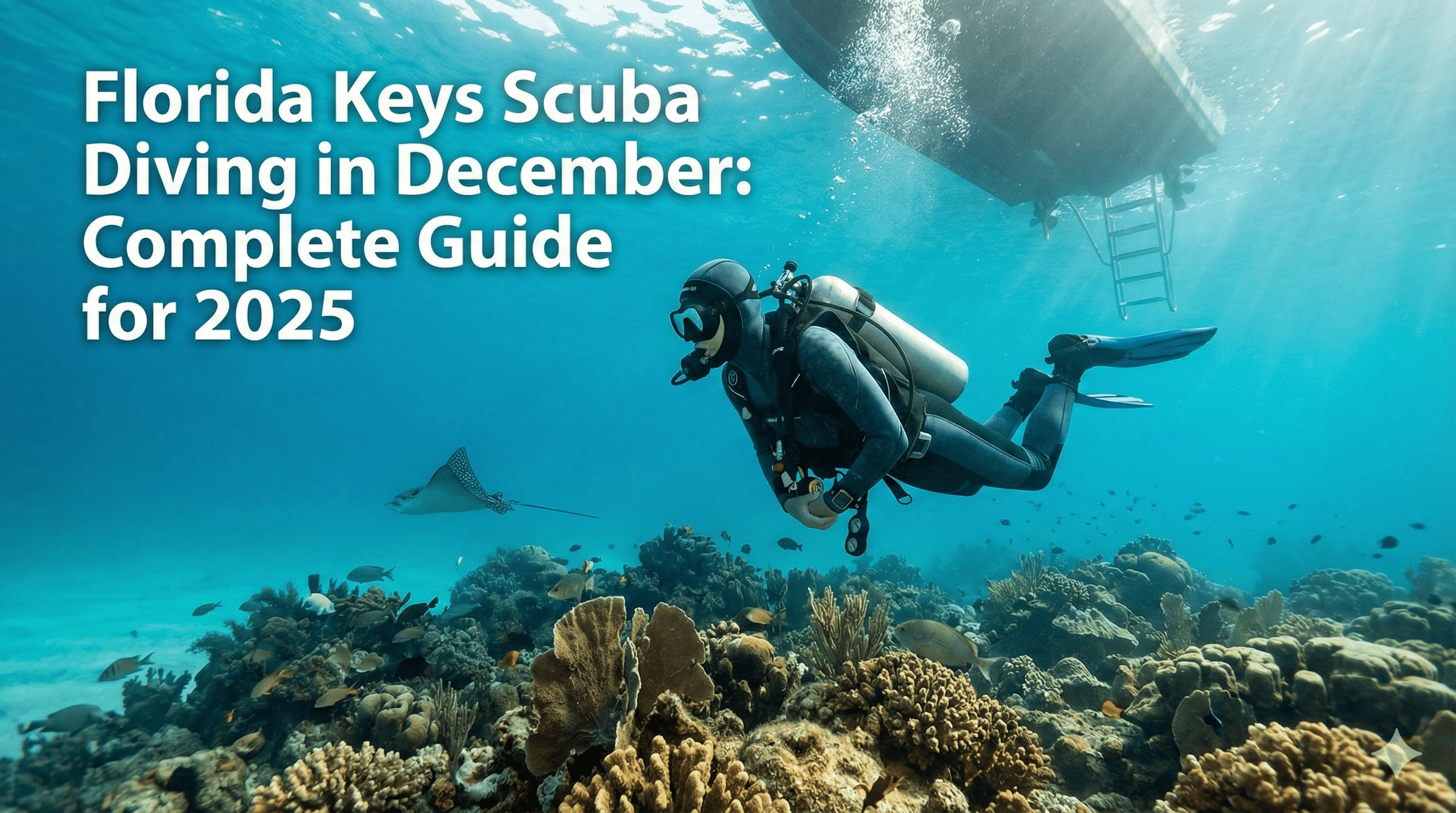If you’re weighing a winter getaway and have a wetsuit itching for saltwater, Florida Keys scuba diving in December deserves a look. Key West and Key Largo keep their charm when most U.S. diving destinations have packed up for the season. December draws divers looking for clear water and the kind of mild weather that lets you surface without freezing. So, what’s December really like beneath the waves? We’ll break down the water temperature, wind patterns, crowd levels, and gear recommendations. Beyond the stats, this guide leans on practical advice you won’t find in a standard brochure.
What to Expect: Florida Keys Diving in Winter
Winter in the Florida Keys has a different energy than the peak summer months. While tourism picks up around the holidays, the reefs often find a quieter rhythm. Water temperatures dip enough to ward off the oppressive summer heat, and—here’s the sweet spot—the boats are less crowded between Thanksgiving and the New Year rush. You’ll have more breathing room on the wrecks. Grouper and other winter visitors patrol the reefs, and wildlife acts less skittish with fewer snorkelers in the water. It’s ideal for photographers or anyone wanting to soak in the scenery undisturbed. The trade-off? Weather. Winter cold fronts can sweep through with little warning, stirring up the sea and dropping visibility. Flexible planning is your best asset here; if the wind kicks up on the ocean side, you might need to dive the bay side or wait a day.
Conditions: Weather, Water, and Visibility
Above water, it’s mild compared to most of the U.S., with air temps between 70°F and 80°F. It’s cool enough for a sweatshirt at sunset but rarely uncomfortable. As for the water, expect temperatures ranging from 72°F to 76°F. Visibility hovers between 10 and 80 feet, heavily dependent on the wind. If a strong north wind blows, it can chop up the surface and reduce clarity. Conversely, gentle breezes often mean crystal-clear days.
The Reality of Winter Diving
Ask any dive instructor in the Keys about winter, and they’ll tell you it’s all about thermal management.
- The Chill Factor: Entering 75-degree water feels great initially, but after 45 minutes, your core temperature drops.
- Surface Intervals: This is where you get cold. A wet wetsuit or a wet body in a 15-knot breeze feels cold. Bring a windbreaker or “boat coat.”
- Schedules: Stormy days can push schedules back. Operators rarely cancel unless safety dictates it, but they might move sites to protected or calmer areas.
Florida Keys Marine Life in December
Wildlife encounters change as the water cools. Large groupers and barracudas become bolder. You’ll likely spot southern stingrays gliding along sandy patches and spotted eagle rays, which frequent the Keys more often in winter. Nurse sharks often nap beneath ledges. Coral health relies on water temperature and sunlight, but December still offers plenty of color. Without the summer haze, sunlight penetrates deep, making for high-contrast photography.
Essential Dive Sites
December favors sites that offer both biological density and structure. Here are the standouts:
- USNS Vandenberg (Key West): A massive artificial reef. In winter, with fewer divers, the scale of the radar dishes and superstructure feels even more imposing.
- Molasses Reef (Key Largo): A classic for a reason. It holds massive populations of grunt, snapper, and parrotfish, regardless of the season.
- Looe Key (Near Big Pine Key): A protected marine sanctuary known for its spur-and-groove coral formations. It’s exposed, so pick a calm day.
- John Pennekamp Coral Reef State Park: Offers history and easy shore access. This is a solid backup if you need a shallow, relaxed dive before flying out.
- Coffins Patch and Sombrero Reef are both protected reefs and are always great options.
Operator Insights
As one of the best dive shops in the Keys, we understand when to pivot if needed. Morning trips can be chilly, so if you want warmer, consider leaving later in the day to let the air warm up. You’ll also find operators stocking thicker rental suits. Group sizes are generally smaller, meaning more personalized attention from the divemasters. We do our best to get a good idea of conditions at least a day before, but weather can change quickly.
Gear Guide for December 2025
Comfort makes or breaks a winter dive. The 3mm shorty you wore in September won’t cut it. If you run cold or plan on doing multiple dives a day, upgrade your exposure protection.
Packing checklist:
- Wetsuit: A full 5mm suit is standard for December. A high-quality 3mm might work if you run warm, but bring a hooded vest just in case.
- Surface Warmth: A beanie and a windproof jacket are essential for the ride back to the dock.
- Protection: Reef-safe sunscreen is still necessary, even in winter.
- Spares: Local shops can run low on specific sizes during the holiday rush, so bring your own mask strap and O-rings.
Safety Tips: Winter Specifics
The primary risks in December are thermal stress and rough seas.
- Watch the Wind: Check marine forecasts (not just weather apps) for wind speed and wave height.
- Warm Up: Get out of your wet gear immediately after the dive if there’s a breeze. Hypothermia is a risk even in Florida.
- Plan B: If the outer reefs are blown out, ask your operator about shallower, protected patch reefs.
- Hydrate: You lose moisture breathing dry tank air, and you might not feel thirsty in cooler weather. Drink water.
Frequently Asked Questions
Is December good for beginners?
Yes, provided you pick a calm day. Shallow reefs in Key Largo and Marathon are very forgiving. However, rough seas can make getting back on the boat challenging for new divers.
Do I really need a 5mm wetsuit?
For most people, yes. A 3mm is fine for one dive, but by the second dive, your body heat creates a deficit. Being warm allows you to enjoy the reef rather than checking your air gauge hoping for the end.
What happens if it rains?
Diving is a wet sport. Boats go out in the rain. We only cancel for high wind or lightning. Rain rarely affects visibility at depth.
Are the dive shops open on holidays?
We stay open through Christmas and New Year’s, but trips book up fast. Try to reserve your spot at least two weeks in advance for holiday weeks.
Planning Your Trip
December diving in the Florida Keys offers a break from the ordinary. It requires a bit more thermal prep, but the reward is uncrowded reefs and distinct wildlife encounters. Check the NOAA marine forecast, layer up, and book with reputable operators who prioritize safety over filling seats (like Captain Hook’s!).
Questions about specific dates?
Give us a call or book at any one of our 3 locations – Key West, Big Pine (Looe Key) or Marathon.

